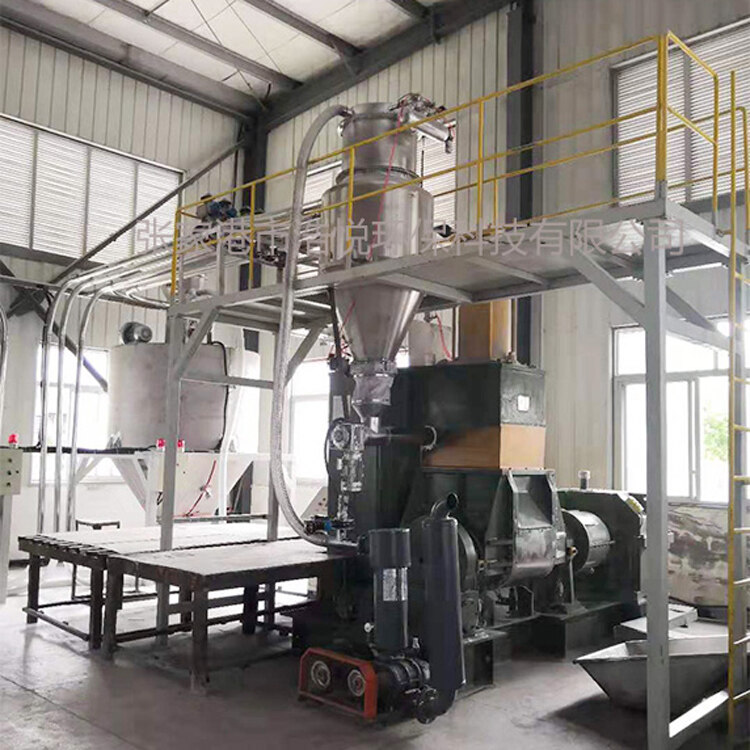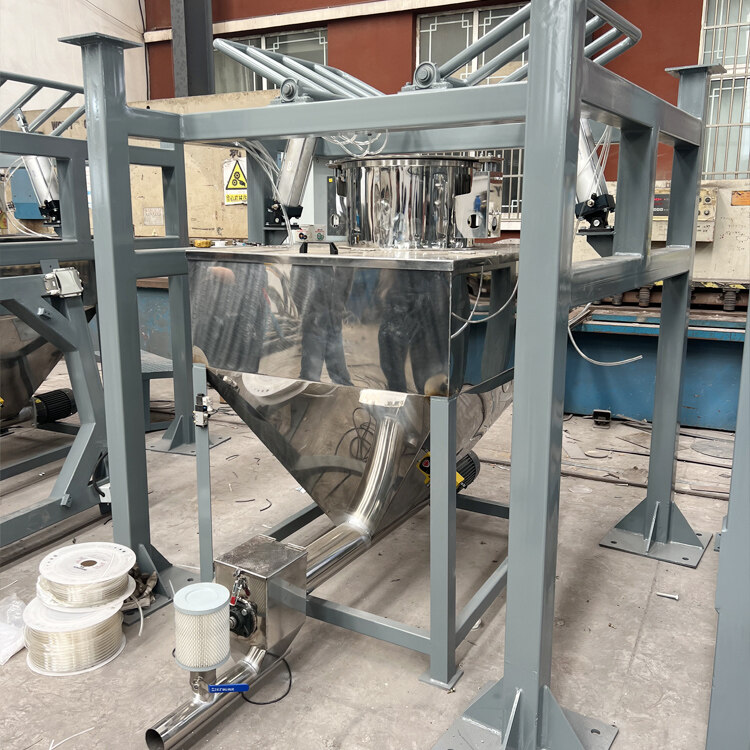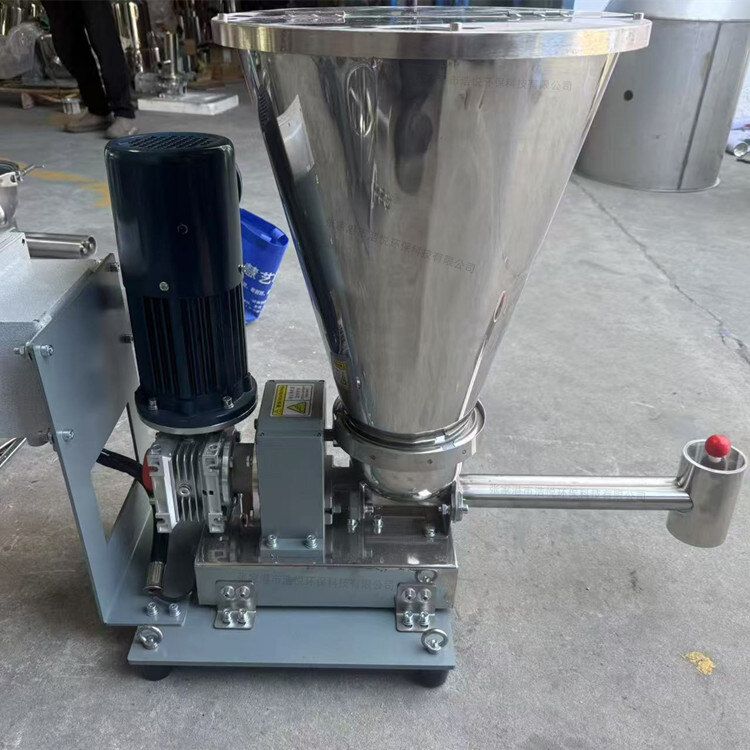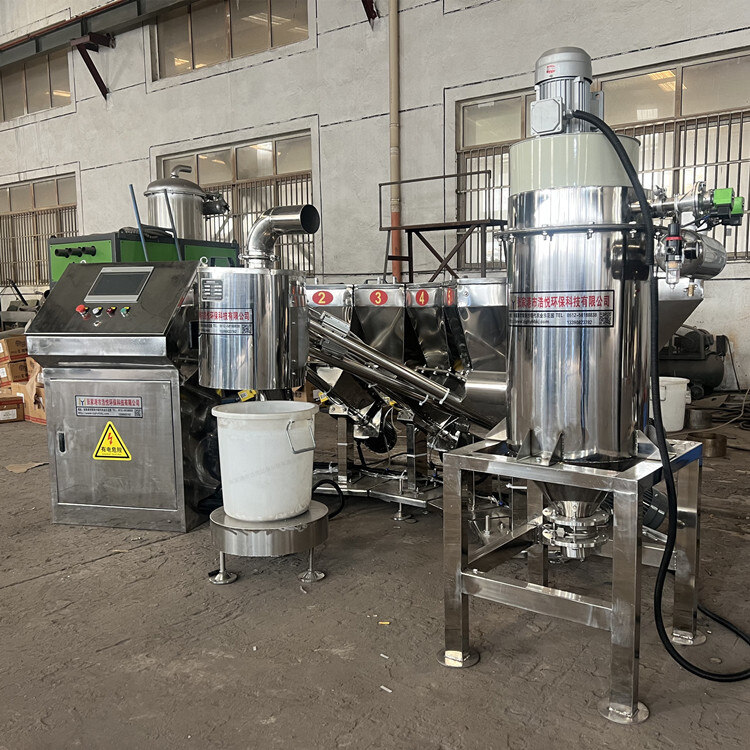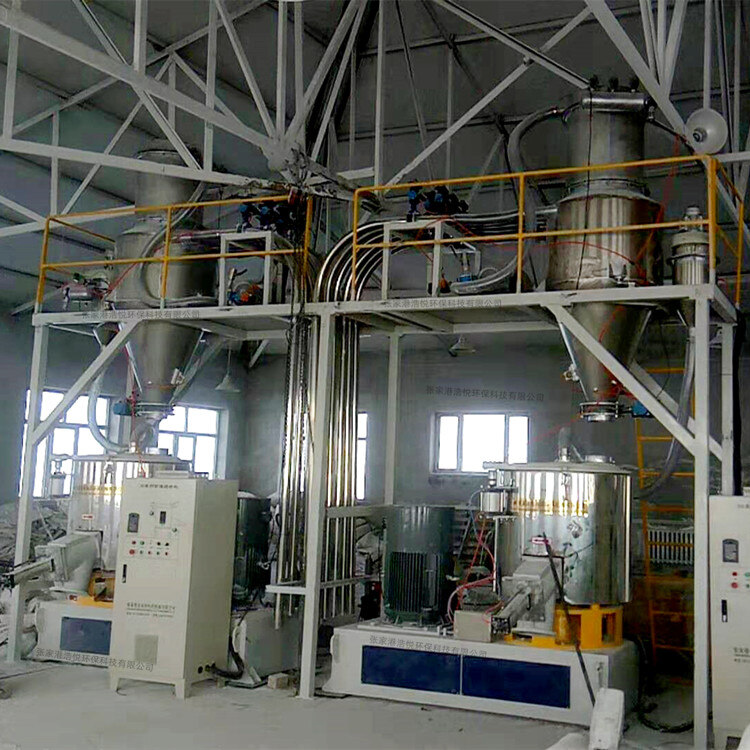- Introduction to automatic batching machine and fully automatic batching machine equipment
- The powder metering system tells you about the introduction of the mixing and drying machine
- 1000kg vacuum feeding machine
- Fully automatic small material batching system
- Research on Innovation of Automatic Weighing Machine Technology
- Design and operation of automatic batching system using PLC, industrial computer and frequency converter
Vacuum measuring and weighing system
- Category:Weightlessness scale
- Hits:125次
- Release Date:2025-06-30
- Share:
- Inquiry
- Details
In fields such as chemical engineering, pharmaceuticals, and new material research and development that require extremely high material measurement accuracy and environmental standards, vacuum weighing systems stand out with their unique technological advantages. This system combines vacuum environment control with high-precision weighing and measuring functions, effectively avoiding external environmental interference during the weighing process and achieving accurate material measurement and monitoring. The following will provide a comprehensive and in-depth introduction to the vacuum weighing system from the aspects of system composition, working principle, core advantages, application scenarios, and development trends.
1、 System core composition architecture
The vacuum measuring and weighing system mainly consists of five modules: vacuum generation and maintenance device, weighing and measuring unit, sealed container, control system, and auxiliary equipment. The various parts work together to form a complete high-precision measuring system.
(1) Vacuum generation and maintenance device
The vacuum generation and maintenance device is the foundation of the system, mainly including vacuum pumps, vacuum valves, vacuum pipelines, and vacuum gauges. As a core component, vacuum pumps commonly include rotary vane vacuum pumps, Roots vacuum pumps, molecular pumps, etc. Rotary vane vacuum pump is suitable for rapid pumping in low vacuum environments; Roots vacuum pumps are commonly used in medium to high vacuum environments and can provide higher pumping rates; Molecular pumps are suitable for ultra-high vacuum environments and can reduce system pressure to 10 ⁻⁶ Pa or even lower. Vacuum valves are used to control gas flow and system sealing, such as pneumatic butterfly valves, angle valves, etc; The vacuum pipeline connects various components, usually made of stainless steel material and polished on the inner wall to reduce gas adsorption and resistance; The vacuum gauge monitors the vacuum degree of the system in real time, and common ones include resistance vacuum gauge, capacitance film vacuum gauge, etc. The accuracy can reach ± 5% FS, ensuring that the vacuum environment of the system is stable within the set range.
(2) Weighing and measuring unit
The weighing and measuring unit is the key to achieving precise measurement in the system, consisting of high-precision weighing sensors, weighing platforms, and signal processing modules. Weighing sensors often use electromagnetic force balance or strain sensors, with an accuracy of ± 0.01% - ± 0.1%, and can work stably in a vacuum environment without being affected by changes in air pressure. The design of the weighing platform needs to balance strength and lightweight, using high-strength aluminum alloy or titanium alloy materials and surface anti-corrosion treatment. The signal processing module amplifies, filters, and performs analog-to-digital conversion on the weak electrical signals output by the weighing sensor, and transmits the data to the control system to ensure the accuracy and stability of the measurement data.
(3) Sealed container
Sealed containers are used to hold materials to be weighed and maintain a vacuum environment. Containers are usually made of stainless steel material, with precision sealing treatment at the welding points to ensure that the vacuum environment is not damaged. According to application requirements, containers can be designed in different shapes and specifications, such as cylindrical containers, square weighing chambers, etc. Set up observation windows on the container to facilitate operators to observe the status of materials; Simultaneously equipped with material inlet and outlet, high vacuum sealed valves are installed at the inlet and outlet to ensure that the system vacuum degree is not affected during the material inlet and outlet process.
(4) Control system
The control system is based on PLC (Programmable Logic Controller) or industrial computer, equipped with dedicated control software and human-machine interface (HMI). The operator sets the vacuum target value, weighing measurement parameters, material formula, etc. through the HMI. During the operation of the system, real-time data from the vacuum gauge and weighing sensor is collected and compared with the set values. When the vacuum degree is lower than the set value, the control system automatically starts the vacuum pump for pumping; When there is a deviation in the weighing data, the material conveying volume will be automatically adjusted or an alarm signal will be issued. In addition, the control system also has data recording, storage, and analysis functions, and can generate historical data reports for production management and quality traceability.
(5) Auxiliary equipment
Auxiliary equipment includes vacuum baking devices, gas filling systems, and safety protection devices. The vacuum baking device is used to heat and bake sealed containers, remove gas adsorbed on the inner wall of the container, and improve the vacuum degree of the system; The gas filling system can fill specific gases (such as nitrogen, argon, etc.) into the sealed container according to process requirements, and adjust the atmosphere inside the container; Safety protection devices include pressure safety valves, emergency stop buttons, vacuum leak alarm devices, etc., to ensure the safe operation of the system and prevent equipment damage or safety accidents caused by vacuum abnormalities.
2、 Working principle and process
The operation of the vacuum weighing system is based on the principle of precise weighing in a vacuum environment. After the system is started, the vacuum generation and maintenance device is first turned on, and the vacuum pump starts working. The air inside the sealed container is extracted through the vacuum pipeline, and the vacuum gauge monitors the vacuum degree inside the container in real time. When the vacuum degree reaches the set value (such as 10 ⁻³ Pa), the system enters a stable vacuum environment.
At this point, place the material to be weighed onto the weighing platform inside the sealed container through the material inlet and outlet. The weighing sensor senses the weight of the material in real time and converts the weight signal into an electrical signal, which is transmitted to the signal processing module. After processing the signal, the signal processing module transmits the data to the control system. The control system determines whether the material weight meets the requirements based on preset measurement parameters.
If the weight of the material is insufficient, the control system will automatically replenish the material by linking with external material conveying equipment (such as vacuum feeder); If the weight of the material exceeds the set value, the control system will control the discharge of excess material. Throughout the weighing process, the control system continuously monitors the vacuum level and weighing data to ensure a stable vacuum environment and accurate measurement.
After weighing is completed, if a specific gas needs to be filled into the container, the control system will activate the gas filling system to inflate according to the set gas type and flow rate. Finally, open the material inlet and outlet valves, take out the weighed material, and complete a weighing and measuring process. The system automatically records the weighing data, including material weight, vacuum degree, weighing time, and other information, for subsequent query and analysis.
3、 Core technological advantages
(1) Ultra high measurement accuracy
In a vacuum environment, the influence of external factors such as air buoyancy and airflow disturbance on material weighing is eliminated. Combined with high-precision weighing sensors and advanced control algorithms, precise measurement of small mass materials can be achieved. In the research and development of semiconductor materials, high-purity metals at the microgram level can be weighed with an error controlled within ± 0.01%, meeting the strict requirements of high-end manufacturing for material measurement.
(2) Anti oxidation and anti pollution
The vacuum environment effectively isolates the air and prevents chemical reactions such as oxidation and moisture absorption during the weighing process, making it particularly suitable for measuring special materials such as active metals and easily oxidizable powders. In the production of positive electrode materials for lithium batteries, it is possible to avoid the reaction of lithium salts and other materials with moisture and carbon dioxide in the air, ensuring material quality and product performance.
(3) Flexible process adaptability
According to different process requirements, the vacuum degree and atmosphere environment can be flexibly adjusted, supporting the measurement and weighing of various materials. At the same time, it can seamlessly connect with upstream and downstream equipment (such as vacuum drying ovens, vacuum mixers, etc.), build a complete vacuum production process, and meet diverse production needs.
(4) Intelligence and automation
The control system has powerful automation functions and intelligent algorithms, which can achieve fully automated operation of material weighing and measurement, reduce manual intervention, lower labor intensity and human error. Through data recording and analysis functions, the production process can be optimized to improve production efficiency and management level.
4、 Application scenarios
(1) Chemical industry
In the research and production of fine chemical products, it is used for precise measurement of trace materials such as catalysts and additives. In the synthesis process of new polymer materials, materials such as initiators and crosslinking agents are weighed under vacuum environment to ensure formula accuracy, improve product quality and stability.
(2) Pharmaceutical industry
In drug research and production, raw materials and excipients that are prone to oxidation and moisture absorption are weighed and measured to ensure the accuracy and stability of drug ingredients. At the same time, it meets the strict environmental requirements for sterile drug production, prevents material contamination, and ensures drug quality and safety.
(3) New material research and development
In the preparation process of cutting-edge new materials such as nanomaterials and superconducting materials, precise weighing of high-purity metals, rare elements, etc. is carried out to provide reliable material measurement guarantee for the performance research and production of new materials.
(4) Electronics and Semiconductor Industry
In semiconductor chip manufacturing and electronic component production, high-purity silicon, photoresist and other materials are vacuum weighed to avoid external pollution and ensure the performance and reliability of electronic products.
5、 Development Trends
In the future, vacuum weighing systems will develop towards higher precision, intelligence, and integration. In terms of high precision, by developing new sensors and optimizing control algorithms, the measurement accuracy can be further improved to meet the measurement needs of nanoscale and atomic level materials; In terms of intelligence, artificial intelligence and machine learning technologies are introduced to achieve self diagnosis, self optimization, and adaptive control of the system; Integration is reflected in the deep integration with more production equipment and management systems, building an intelligent and automated vacuum production full process system, and promoting the development of related industries towards high-end and refined.


